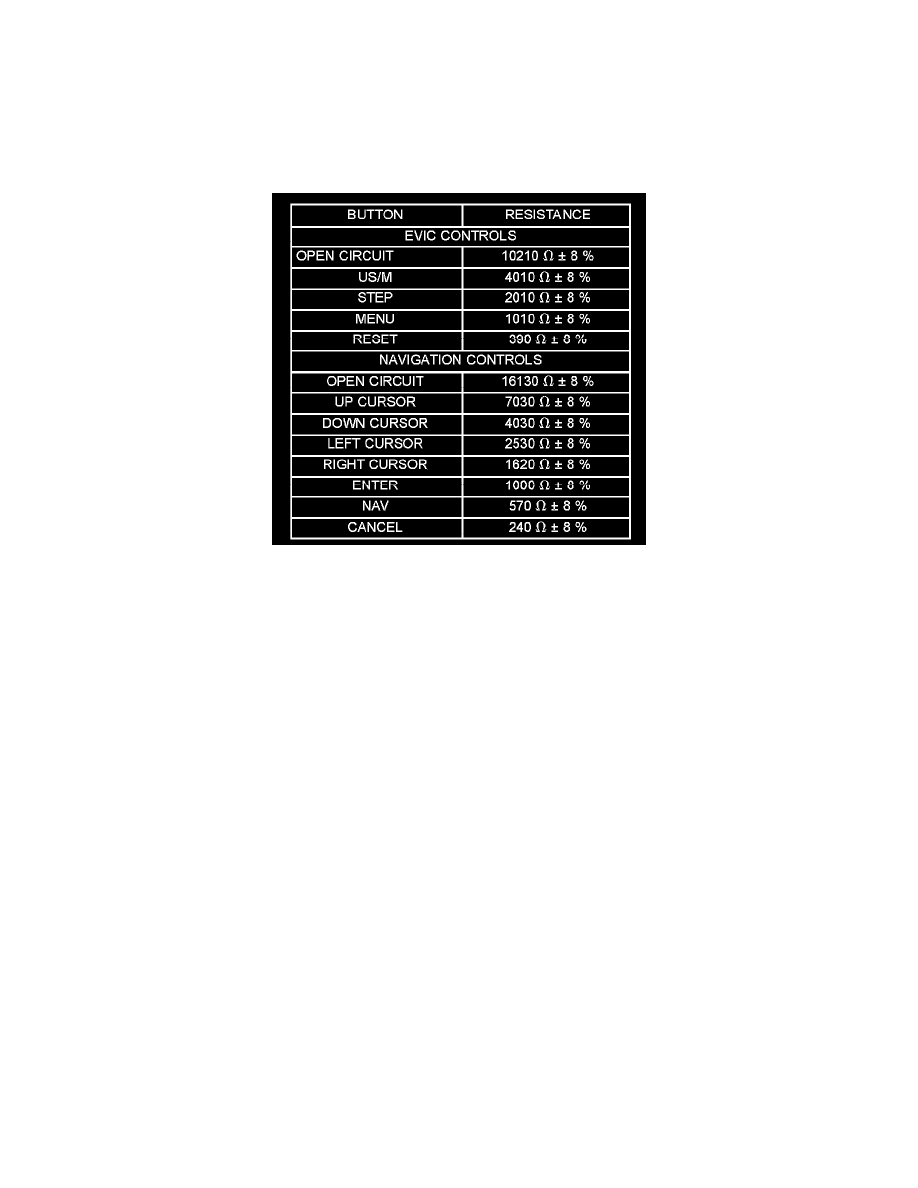Pacifica V6-3.8L VIN L (2005)

Hazard Warning Switch: Testing and Inspection
ELECTRONIC VEHICLE INFORMATION CENTER AND NAVIGATION CONTROLS
Refer to the appropriate wiring information for connector views and pin-outs. Check fuses first that supply power to the switch pod (IOD fuse). If OK,
continue. If not OK, repair as necessary to continue
Remove the instrument panel switch pod for testing. First of all check for 12v battery power at terminal 1 of the instrument panel harness connector Then
check for ground at terminal 12 of the instrument panel harness connector. If OK, continue. If not OK, repair wire as necessary to continue.
Instrument Panel Switch Pod Resistance
Each EVIC button press and the open Circuit State will provide a unique resistance, with respect to the EVIC/NAV Button Analog Common circuit.
Refer to the INSTRUMENT PANEL SWITCH POD RESISTANCE table.
The unique EVIC/NAV button press resistances are:
If any of the resistances are not within the specifications, the entire switch pod needs to be replaced.
CLOCK
For clock diagnosis, check for 12v battery power and ground at the instrument panel connector end of the instrument panel switch pod (terminal 1 - 12v,
and terminal 12 - ground). If power and ground are present and the clock doesn't work, replace switch pod.
If the set button is inoperative, the complete switch pod must be replaced.
HAZARD SWITCH
A low side (ground) signal will be provided from the Instrument Panel Switch Pod to the BCM to indicate that the Hazard button has been enabled
(circuit closed) by a vehicle occupant.
With the switch removed, check continuity between the hazard switch input and the ground terminal when the switch is enabled. If continuity is present,
switch is OK. If no continuity, replace complete instrument panel switch pod.
